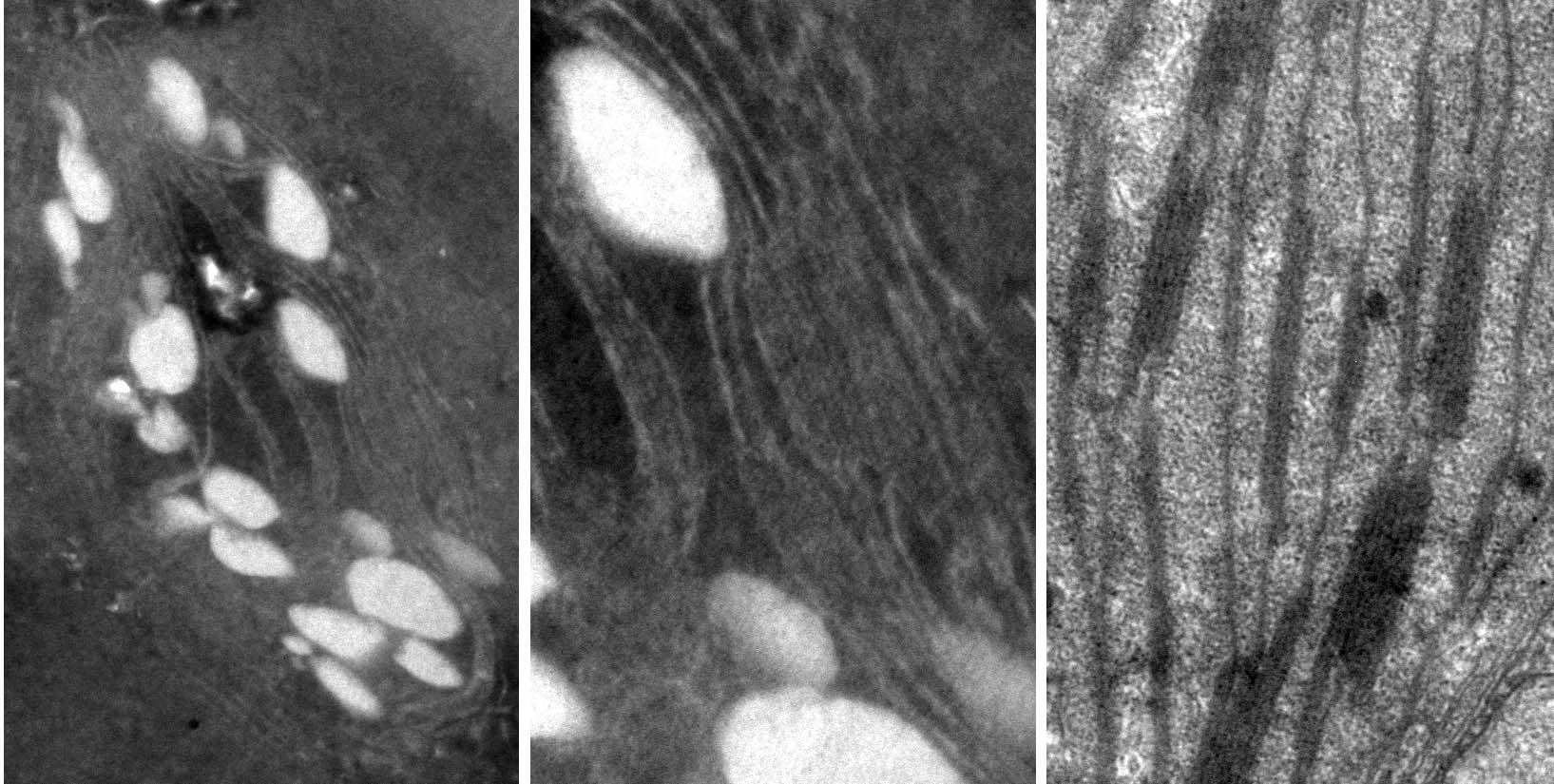叶绿体化石首次在亚洲发现
植物细胞质化石在古生物学界是相对陌生的话题。不过,随着研究的深入,人们发现过去认为难于保存的细胞质其实也能保存为化石。国内的植物细胞质化石研究虽然已起步,但是植物细胞中最大的细胞器----叶绿体在此前报道中却一直杳无踪迹。
最近,中国科学院南京地质古生物研究所王鑫研究员和协作单位同行通过合作研究,在海南岛长昌盆地始新世地层保存的莲叶化石中发现了叶绿体化石。此前,欧美曾报道过类似的叶绿体化石,但在亚洲属于首次发现。

海南岛始新世的莲叶化石中的叶绿体(左)保存着包括基粒片层结构和淀粉粒的超微结构(中)。其中的基粒片层结构和现代莲叶中叶绿体的(右)基本相同。
研究团队在海南长昌盆地始新世发现了原位埋藏的莲的各个部分化石,并以此恢复了整个植物。为了进一步弄清楚该植物的细节,该团队整合了多家单位具有不同专长的专家的优势,从一片保存较好的莲叶取得材料,开展了光学显微镜、扫描电镜和透射电镜综合观察,经过数年的研究最终确认了该材料的细胞残余中有叶绿体特有的片层结构和淀粉粒。
该成果近期在线发表于国际期刊《植物系统与演化》(Plant Systematics and evolution)。
原文摘要:
Ultrastructure of chloroplasts in fossilNelumbo from the Eocene of Hainan Island, South China
Xin Wang, Wenzhe Liu, Kaihe Du, Xiaoyuan He, Jianhua Jin
Fossil cytoplasm is attracting increasing attention in the fossil record, and ultrastructures in Plant Cells are revealing new aspects of ancient life. Chloroplasts have been previously reported in fossil plants in the US, Canada, and Russia. Here, we report on fossil chloroplasts with internal ultrastructure in a fossil leaf of Nelumbo changchangensis from the Eocene of Hainan Island, South China. The chloroplasts in this fossil demonstrate great similarity to their counterparts in living relative as well as those in the previous reports. The well-preserved chloroplasts in plant fossils call for more attention to ultrastructures and the fossilizing mechanisms of cytoplasm.
作者:中科院

